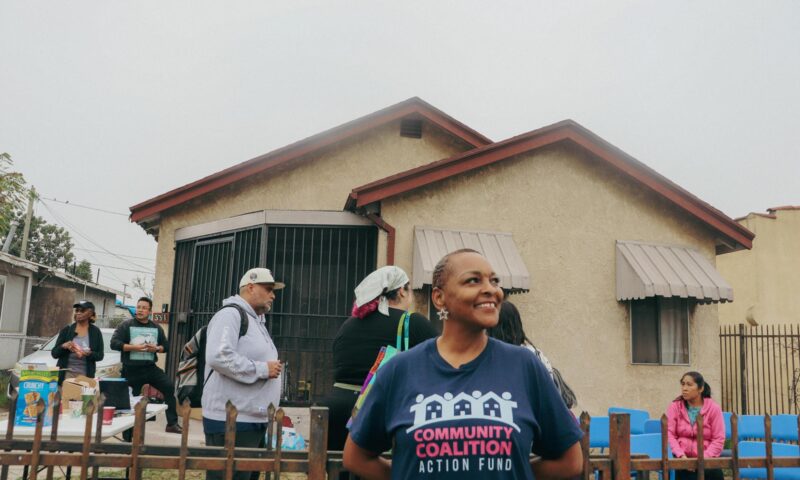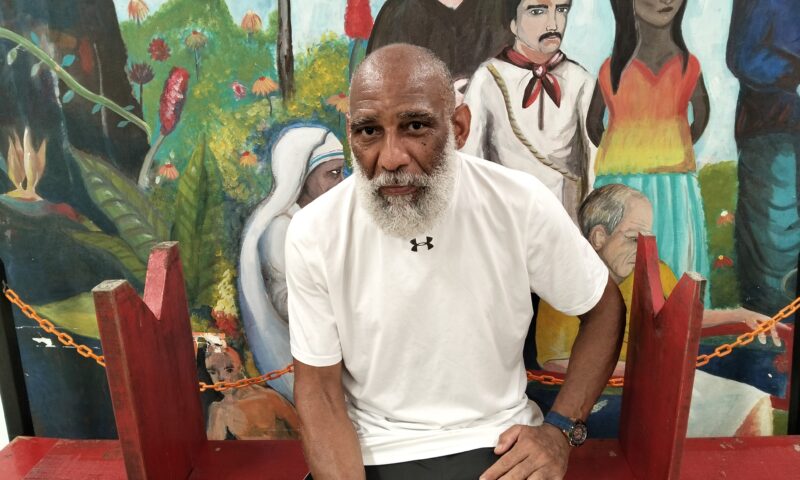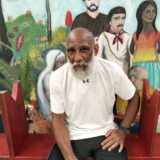Erin Kissane considers herself “the kind of person who has a hard time processing things without doing.”
That’s why, in the early stages of the COVID pandemic, she and several others launched the COVID Tracking Project, initially to document case numbers and the results of testing. Within about a year, the site’s data “was cited by the CDC, the FDA, the Department of Energy, and the Department of Defense, used in more than 40 Congressional reports, and referenced in lawsuits by the NAACP and the Southern Poverty Law Center,” she wrote on her website.
Now Kissane is at it again. She and a group that has grown to about 80 volunteers launched “Unbreaking” in May, a digital project focused on “mapping the damage done [by the Trump administration] and its human costs.” The website monitors a growing number of issues, including the defunding of food safety programs and Medicaid, as well as cuts to transgender healthcare, and explains what these and other rollbacks mean for everyday people. It also documents efforts to fight back, in courts and communities. She hopes that providing the information will contribute to the “unbreaking” — or the repairing — of the damage being done to the country during Trump’s second term.
Kissane is one of a growing volunteer army across the country — including a data scientist, a former Department of Justice attorney, a cognitive neuroscientist and assorted data nerds who have launched dozens of websites to, as Kissane put it, “help ordinary people in the U.S. understand what is happening” in a time of unprecedented change. Capital & Main spoke to a handful of these digital soldiers to understand what they’re doing and why.
They spoke about the importance of gathering and presenting truthful, accurate information in a way that people can understand, at a time when the federal government is failing to be transparent. They also described a sense of mission that keeps them moving forward even as new information about attacks on institutions, programs and civil rights “floods the zone” daily, as one of the project organizers put it — echoing a phrase popularized by Trump ally Steve Bannon. Kissane has built a spreadsheet tracking 78 Trump-era data projects, including some initiated by news outlets. (Capital & Main’s own DOGE Impact Tracker is cataloging news stories highlighting the human impacts of the administration’s spending cuts.)
The grassroots data projects include the “United States Disappeared Tracker,” a site that uses GIS, or mapping software, to provide as much information as is publicly available about the people ICE is detaining and deporting. The site includes names of detainees and biographical information, and where they were when the federal immigration agency “disappeared” them.
Drawing on sources that range from GoFundMe pages to ICE, its main aim, said creator Danielle Harlow, a data scientist, is to “keep track of the names and pictures of people” who are detained and deported.
“ICE Deportation Tracker,” another digital project, gathers more comprehensive regional-level data about raids, detention and deportation, and also allows users to calculate their individual deportation risk.
* * *
Harlow said seeing news in March of ICE grabbing Tufts University graduate student Rümeysa Öztürk on the streets of Somerville, Massachusetts, was the “precipitating incident” that drove her to launch United States Disappeared Tracker.
The incident changed how Harlow saw the federal government. Before, she said, “I would have thought if someone was arrested … it was for cause. I assumed the government was acting in good faith.” But when she learned that ICE had detained Öztürk due to an op-ed she coauthored for The Tufts Daily about the university’s investments in Israel and its position on Gaza, “it became clear I would have to reorient my thinking,” Harlow said.
Öztürk wound up being detained until May, across five different states. Harlow decided to “keep track” of people like her — their names, pictures, any information about them. The project’s name is meant to evoke the desaparecidos of Latin American dictatorships, like Chile’s Pinochet, she said, adding, “Are we becoming that?”
Cognitive neuroscientist and psychologist Alyssa Sinclair, like Kissane, also worked on a digital project during the height of the COVID pandemic, focusing on the health risks associated with gatherings of various sizes in different locations. In February, when cuts to the National Institutes of Health (NIH) began, her partner on the pandemic project, University of Maryland biology professor Joshua S. Weitz, reached out to her.
“The general public doesn’t know what this means,” Weitz told her, referring to budget cuts that may reach several billion dollars. “What if we do the same thing we did during COVID?”
The two resolved to show the negative impacts of the Trump administration’s cuts to NIH “on communities across America — not just [on] the two elite institutions of Columbia and Harvard,” Sinclair told Capital & Main. “It’s a much broader impact than you might otherwise know.”
One of the trackers, called the Science & Community Impacts Mapping Project, or SCIMaP, is an interactive website aimed at documenting cuts to the National Institutes of Health at the state and county levels. It was launched by a team of researchers in March and is maintained by a volunteer team of 11 people. Sinclair said visitors to the site have zoomed in on their counties and posted the information on social media, tagging their congressional representatives.
Sinclair, like others Capital & Main spoke to for this story, said “with things happening so quickly, it’s difficult to keep up.” Also echoing others, she said her project may soon obtain philanthropic funding.
Abby André, a former Department of Justice attorney and law professor, said she “started to look for resources to make sense of the impact of federal changes at the local level” in February. “I didn’t see any.
“It occurred to me a lot of people don’t understand how embedded federal services are in our communities,” she said. André started collecting news articles and any government data she could find. She used mapping software and launched The Impact Project in late March. It now tracks the local impacts of federal job and funding cuts and other changes across sectors of the economy and government.
* * *
Goals vary among the digital projects keeping track of changes wrought by the current administration.
Danielle Harlow, the data scientist who launched the United States Disappeared Tracker, wants the public to recognize that the “disappeared” are “real people” and that every individual “has a life with value.” She also is seeking to create a digital record that may eventually help hold members of the Trump administration accountable. “Maybe some time in the future, there might be legal actions against the people who perpetrated this,” Harlow said. “It might be good to have a database of people impacted.”
André wants her project’s detailed information about services that have been cut and other changes to get in the hands of decision-makers, to help inform responses so that “people aren’t lacking essential services.” Like Harlow, she’s also thinking about the future. “I hope, in the coming years, [The Impact Project] is a source of clarity about what happened,” she said.
Buoyed by her research on the impacts of SCIMaP, Sinclair hopes to “share information to change minds.” Soon-to-be published surveys she conducted found that 26% of people who initially viewed the NIH cuts favorably changed their minds after reviewing the site, while 46% of those who were initially unsure came to disapprove of the cuts after visiting the site.
Kissane, with Unbreaking, hopes the information gathered on the site will help motivate people to get more engaged, whether through electoral politics or mutual aid, or at the local level through activism at school boards and other local institutions. “I hope we can orient people, so they don’t feel so overwhelmed,” she said.
She approaches her work on the project with a sense of urgency, given the severity of the attacks on health care and other services necessary for people’s health and well-being. “A year ago, talking about survival might have sounded like an exaggeration,” she said. “I hope it doesn’t now. The stakes are extremely high.”
Copyright 2025 Capital & Main.
This story has been updated to include details about the SCIMaP project.

 The SlickNovember 14, 2025
The SlickNovember 14, 2025
 Latest NewsNovember 19, 2025
Latest NewsNovember 19, 2025
 Latest NewsNovember 18, 2025
Latest NewsNovember 18, 2025
 The SlickNovember 18, 2025
The SlickNovember 18, 2025
 Latest NewsNovember 17, 2025
Latest NewsNovember 17, 2025
 Column - State of InequalityNovember 21, 2025
Column - State of InequalityNovember 21, 2025
 StrandedNovember 25, 2025
StrandedNovember 25, 2025
 Column - State of InequalityNovember 28, 2025
Column - State of InequalityNovember 28, 2025

